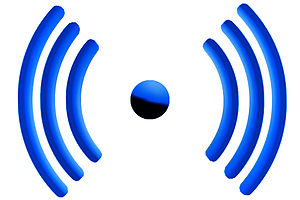WiFi has been around since the mid 90’s as a local wireless data connection. WiFi products grew somewhat slowly with the two primary uses being external WiFi networks used to supply point-to-point data in mostly rural areas, and as the way to connect wirelessly to computers within a home or business. And companies like Cisco, Linksys and others made a decent living selling WiFi transmitters.
But then along came the smartphone and suddenly cellular data offload became a huge business as everybody scrambled to use WiFi data from their landline network rather than pay for more expensive cellular data. All of a sudden WiFi routers became a necessity and most homes that have a landline data connection now also have a WiFi router. In fact, most cable companies, FTTX companies and telcos have built WiFi into their standard data modems.
And as successful as WiFi has been, the spectrum is about to get a lot busier. Consider the following industry trends:
Proliferation of Commercial Hotspots. There has been a proliferation of public WiFi hotspots in recent years. It used to be when you wanted free WiFi you would head to a Starbucks. But since most businesses now have data connections many of them had added WiFi for their customer’s convenience. One good indicator of this is the website WeFi.com. This site tracks known public WiFi hotspots and conveniently maps them. And this site shows many hotspots, but there are many additional hot spots that are not shown on these maps.
In addition to businesses deploying hot spots, some carriers have started deploying hot spots as part of their business plan. For example, it was recently reported that cable companies have deployed over 300,000 public WiFi hot spots, with most of those being deployed by Comcast, Comcast is deploying public hotspots in areas where they have stiff competition with fast landline data, such as areas with Verizon FiOS. So in some of these areas Comcast has deployed hot spots in areas where the public tends to congregate. For instance, they tout that they have completely covered the Jersey shore. When they can they sell hot spots to businesses as a money-making venture, but many of the Comcast hot spots are free for the use of any Comcast customer and have been installed to give them a competitive marketing advantage over their local competition. They report that the public is flocking to their hotspots with cell phones and tablets.
Settop Boxes. Many of the settop makers for cable television are coming out with version of their boxes that use WiFi to connect and transmit TV from one central hub to other televisions or to tablets, PCs or cell phones. There has already been a trend of creating a ‘whole-house’ centralized DVR / settop box that is able to record and playback multiple shows to any other TV in the home. Settop box manufacturers are going to count on the new 801.11ac standard to provide enough bandwidth to transmit cable signal between TVs.
City-wide WiFi networks. There have been a number of municipalities and other entities that have been expanding free WiFi networks. Wikipedia now lists 65 US cities that have deployed WiFi networks in some or all parts of the City. For the most part these networks offer free service although some of them instead offer WiFi by the hour or day similar to what is available in airports. I know of cities who do this which are not on this list, so the actual count of cities with some public WiFi coverage is probably quite a bit higher than 65. And I read almost daily of cities who are thinking about adding more of this. Additionally there are many cities that have added WiFi networks for first responders and City employees without offering these networks for the public.
The Internet of Things. But the real explosion of WiFi is going to come from the Internet of Things. There is only two current reliable ways for the multitude of IoT devices to communicate with a central hub, either WiFi or Bluetooth. It appears that most device makers are leaning towards WiFi as the preferred communications method since Bluetooth is mostly limited by line of sight to the central router. It’s estimated that over the next decade that billions of new IoT devices will be deployed and will start sharing the WiFi bandwidth.
There are a lot of concerns that the number of devices that will be using WiFi is going to cause a lot of local interference, which is an issue I will cover in a later blog.


Reblogged this on High on Science & Tech – H.O.S.T.
Pingback: Two cents on community hotspots for folsk who might be setting them up | Blandin on Broadband